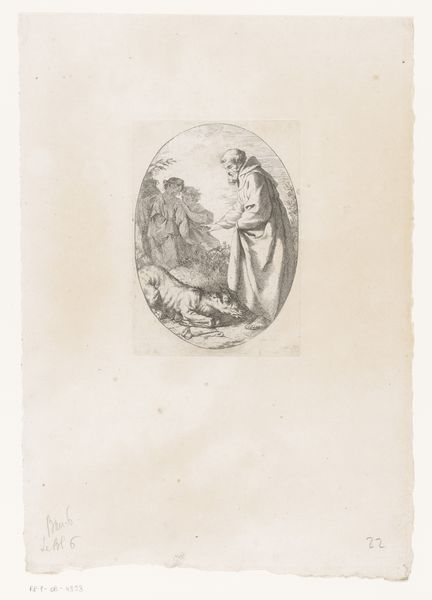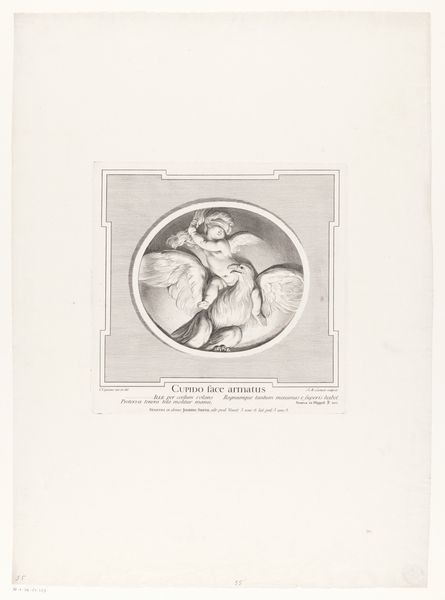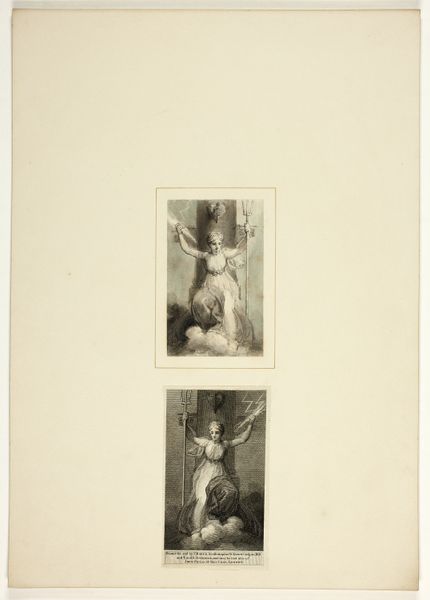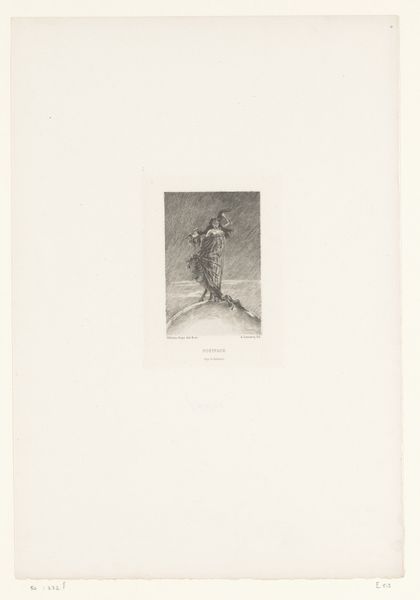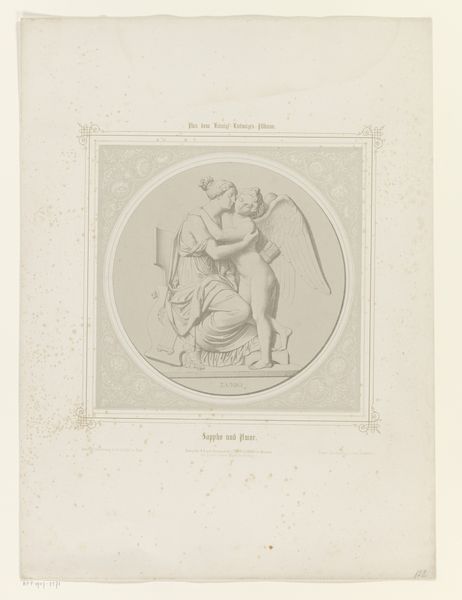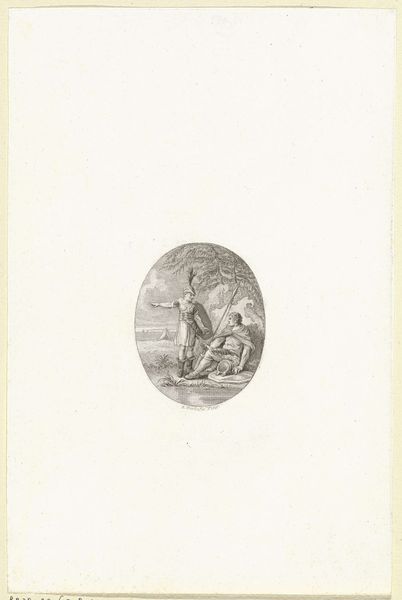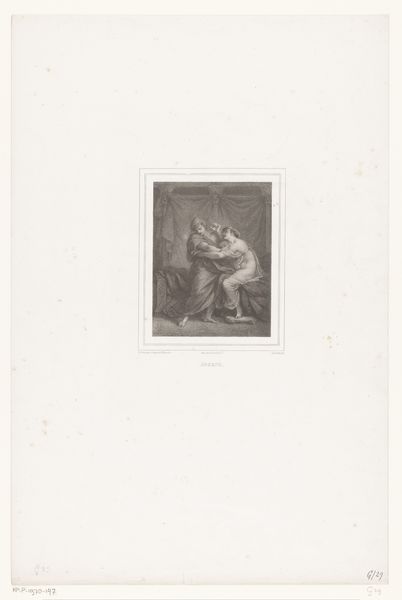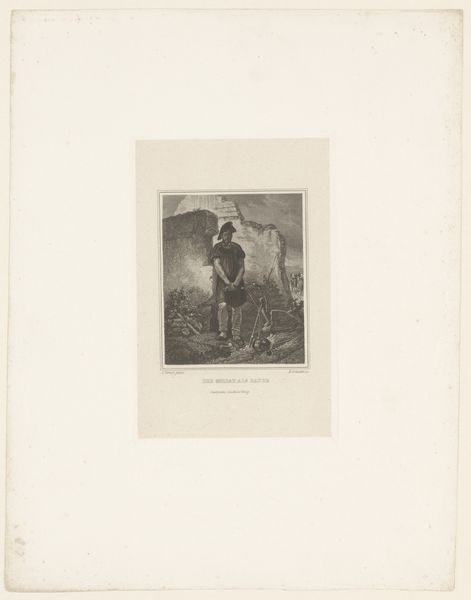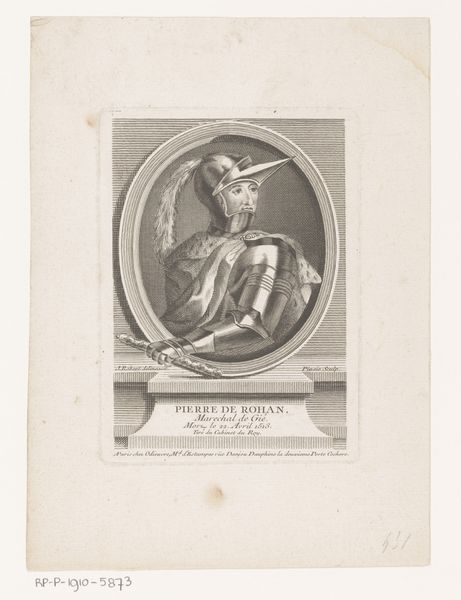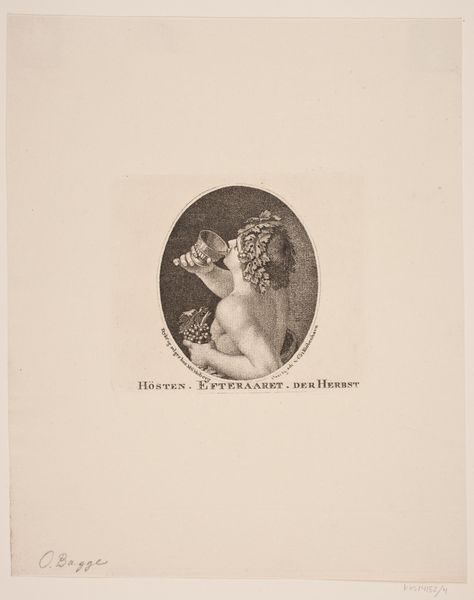
engraving
#
allegory
#
baroque
#
old engraving style
#
figuration
#
nude
#
engraving
Dimensions: height 267 mm, width 202 mm
Copyright: Rijks Museum: Open Domain
Curator: Here we have "Pijlen werpende putto," an engraving dating back to 1704 by Giovanni Girolamo Frezza. The scene captures a winged Cupid amidst swirling clouds, launching arrows. Editor: My first impression is one of lightness, almost airy. The delicate lines create a sense of ethereal movement, even though it's static. There's also something melancholic about the lone figure in this oval composition. Curator: Interesting that you focus on melancholy! I’m more intrigued by how this Baroque print reflects the printing capabilities of the time. Consider the techniques involved to reproduce this at scale. It tells a tale of labor and dissemination. Were these prints intended for private collections, or perhaps for wider circulation, influencing popular notions of love and beauty? Editor: I see your point, and that’s valid, but the visual vocabulary pulls me in another direction. Look at the contrapposto of the figure, the way the light falls, creating depth. The formal decisions create an emotional pull. The arrows become these sharp lines intersecting the figure’s smooth skin, causing tension in the aesthetic pleasure. Curator: The social implications embedded in art production cannot be ignored. Frezza's skilled labor is also implicated. He has successfully captured the dynamics and demands for allegorical representations and idealized bodies in the Baroque era. Who were his patrons and what role did the church play? The image operates as a vehicle within these contexts, beyond being just an assembly of aesthetic elements. Editor: I'd argue it is the tension between what is depicted versus how it is crafted which reveals how Baroque conventions and aesthetic structures continue to move viewers. It’s the artist manipulating light, form, and the conventions of rendering a nude body, that allows him to produce more than mere reproduction of allegory; he has composed a feeling, and emotion with this particular orchestration. Curator: The engraving's accessibility, in its own time, shaped expectations around ideal form. This connects to its materiality: the paper used, the ink, the very act of printing... All accessible processes reflecting particular consumption trends. Editor: Well, I'm struck by how this seemingly simple engraving engages in such multifaceted ways with the beholder through lines and forms. Curator: And for me, the object’s past is still very alive and at play in its present. Thank you.
Comments
No comments
Be the first to comment and join the conversation on the ultimate creative platform.

